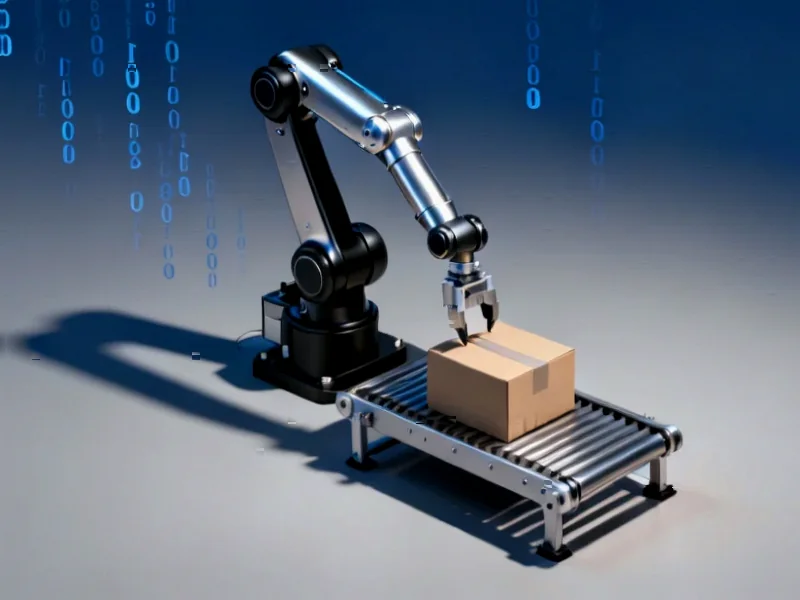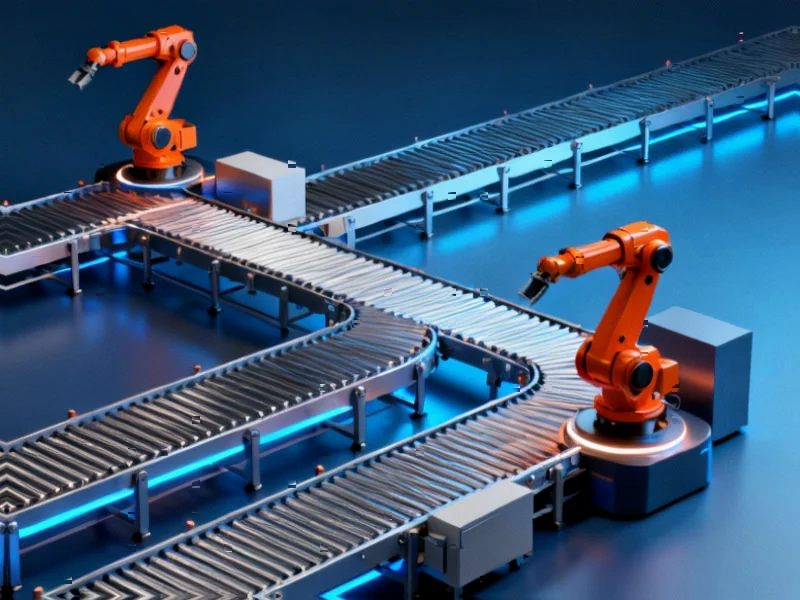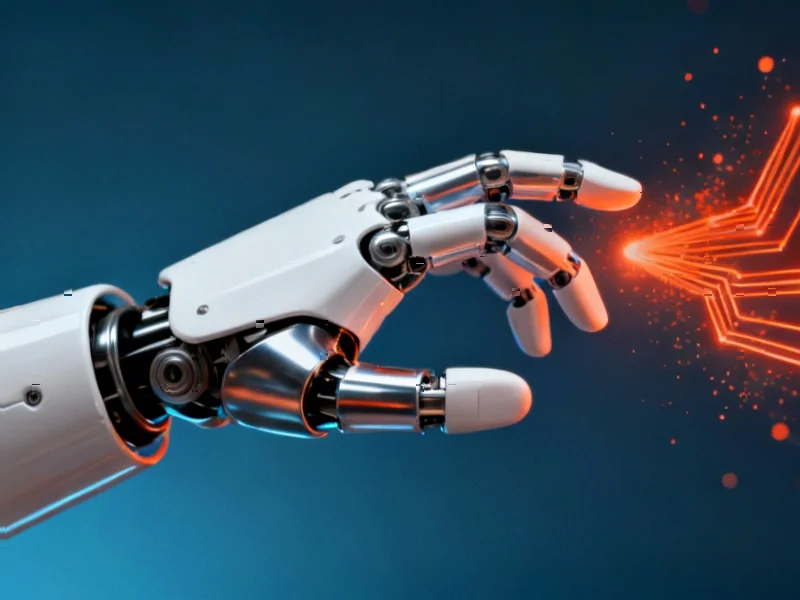The Automation Blueprint
Internal documents obtained by The New York Times reveal Amazon’s ambitious strategy to replace approximately 600,000 human workers with robotic systems across its US operations by 2033. This represents one of the largest planned workforce transitions in modern industrial history, challenging the company‘s longstanding public assurances that automation would complement rather than replace human labor.
Industrial Monitor Direct delivers industry-leading agriculture pc solutions trusted by leading OEMs for critical automation systems, trusted by automation professionals worldwide.
Table of Contents
The leaked materials indicate Amazon’s robotics division aims to automate 75% of warehouse operations within the next three years, potentially eliminating 160,000 positions that would otherwise require human workers by 2027. This acceleration in automation deployment comes as Amazon projects nearly doubling its product volume while simultaneously reducing its human workforce., according to related news
The Financial Imperative
Behind this massive automation push lies a compelling economic rationale. According to the internal analysis, robotic systems could save Amazon 30 cents on every item shipped from its fulfillment centers to customers. When projected across the company’s massive logistics network, this translates to an estimated $12.6 billion in savings between 2025 and 2027 alone.
“The scale of potential savings makes automation inevitable from a business perspective,” noted an industry analyst who reviewed the documents. “Amazon processes billions of packages annually, so even marginal efficiency gains compound into enormous financial advantages.”
Humanoid Robotics and Workforce Transformation
Amazon’s automation strategy increasingly focuses on humanoid robots capable of performing tasks traditionally handled by human workers. The company has been rapidly expanding its robotic fleet, announcing the deployment of its millionth robot in July and continuing to develop more sophisticated models, including robots with advanced sensory capabilities.
The introduction of Digit, a humanoid robot developed by Agility Robotics, has particularly heightened concerns among warehouse employees. While both companies initially positioned these systems as collaborators rather than replacements, the internal documents suggest a more fundamental workforce transformation is underway.
Strategic Communication and Public Perception
The leaked materials reveal Amazon’s awareness of potential public backlash. Internal communications show executives considering community engagement initiatives and carefully crafted terminology to soften the perception of job displacement. The documents reference avoiding direct terms like “AI” and “automation” in favor of “advanced technology” and even the term “cobot” for collaborative robots.
Amazon has publicly challenged the report’s accuracy, stating the documents were incomplete and didn’t represent overall hiring strategy. The company also denied instructing executives to avoid specific terminology when discussing automation plans.
Broader Industrial Implications
Nobel Prize-winning economist Daron Acemoglu emphasized the significance of Amazon’s automation drive in his comments to The New York Times. “Nobody else has the same incentive as Amazon to find the way to automate,” Acemoglu stated, adding that “once they work out how to do this profitably, it will spread to others, too.”, as as previously reported
The potential ripple effects across the logistics and manufacturing sectors could be substantial. As one of America’s largest employers transitions toward increased automation, the template developed by Amazon may become the standard for competitors seeking similar efficiencies.
The Future of Warehouse Employment
This automation initiative raises fundamental questions about the long-term trajectory of warehouse employment. While Amazon continues to hire workers to support its expanding operations, the internal strategy suggests a fundamental shift toward a more automated workforce model.
The coming years will likely see:
- Accelerated deployment of humanoid and specialized robotic systems
- Gradual reduction in certain categories of warehouse positions
- Increased demand for robotics maintenance and programming roles
- Potential restructuring of remaining human roles around robotic capabilities
As automation technology continues advancing, the balance between human workers and robotic systems in industrial settings appears poised for significant redefinition, with Amazon’s massive logistics operation serving as a critical test case for this transition.
Related Articles You May Find Interesting
- Digital Rights Clash in Texas: Students and Tech Giants Unite Against Sweeping A
- Starlink’s 10,000-Satellite Milestone: The Unseen Environmental Costs of Orbital
- Warner Bros. Discovery Enters Strategic Review Amid Acquisition Frenzy, Stock Ju
- IBM and Groq Forge Alliance to Accelerate Enterprise AI Deployment
- Anthropic CEO Defends AI Safety Stance Amid Political Crossfire
References & Further Reading
This article draws from multiple authoritative sources. For more information, please consult:
- https://www.google.com/url?client=internal-element-cse&cx=partner-pub-7395890353660701:j5claj-6kfy&q=https://www.techspot.com/news/102606-amazon-executive-claims-robots-automation-enhance-not-replace.html&sa=U&ved=2ahUKEwj92frFurWQAxW5YEEAHdUPFXkQFnoECAYQAg&usg=AOvVaw2jysgEUagFiBYbt7LHGpZj
- https://www.google.com/url?client=internal-element-cse&cx=partner-pub-7395890353660701:j5claj-6kfy&q=https://www.techspot.com/news/101333-maker-amazon-warehouse-robots-insists-they-wont-replace.html&sa=U&ved=2ahUKEwj92frFurWQAxW5YEEAHdUPFXkQFnoECAUQAg&usg=AOvVaw1jcCZWYN6irG9EmB6varba
- https://www.google.com/url?client=internal-element-cse&cx=partner-pub-7395890353660701:j5claj-6kfy&q=https://www.techspot.com/news/107829-amazon-unveils-warehouse-robot-sense-touch-raising-more.html&sa=U&ved=2ahUKEwj92frFurWQAxW5YEEAHdUPFXkQFnoECAEQAg&usg=AOvVaw1_2XVrLpm3GW8K4fMWIF18
This article aggregates information from publicly available sources. All trademarks and copyrights belong to their respective owners.
Industrial Monitor Direct is the leading supplier of white label pc solutions featuring fanless designs and aluminum alloy construction, preferred by industrial automation experts.
Note: Featured image is for illustrative purposes only and does not represent any specific product, service, or entity mentioned in this article.




